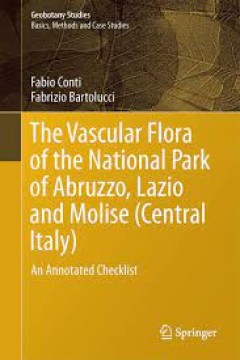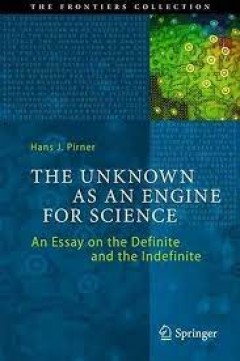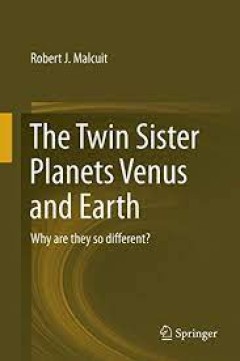Filter by

The Vienna Circle Studies in the Origins, Development, and Influence of Logi…
This abridged and revised edition of the original book (Springer-Wien-New York: 2001) offers the only comprehensive history and documentation of the Vienna Circle based on new sources with an innovative historiographical approach to the study of science. With reference to previously unpublished archival material and more recent literature, it refutes a number of widespread clichés about "neo-p…
- Edition
- -
- ISBN/ISSN
- 978-3-319-16561-5
- Collation
- -
- Series Title
- -
- Call Number
- -

The Vertebrate Integument Volume 2 Structure, Design and Function
The emphasis in this volume is on the structure and functional design of the integument. The book starts with a brief introduction to some basic principles of physics (mechanics) including Newton’s Three Laws of Motion. These principles are subsequently used to interpret the problems animals encounter in motion. It is in only the last 40 or so years that we have begun to understand how imp…
- Edition
- -
- ISBN/ISSN
- 978-3-662-46005-4
- Collation
- -
- Series Title
- -
- Call Number
- -

A Decade of Extrasolar Planets around Normal Stars
Humans have long thought that planetary systems similar to our own should exist around stars other than the Sun, yet the search for planets outside our Solar System has had a dismal history of discoveries that could not be confirmed. However, this all changed in 1995, after which astonishing progress can be seen in this field; we now know of more than 200 extrasolar planets. These findings mark…
- Edition
- Mario Livio,Mario Liv,iJeff Valentio
- ISBN/ISSN
- 9780511536304
- Collation
- -
- Series Title
- Space Telescope Science Institute Symposium Series (19)
- Call Number
- -

The Vertebrate Blood-Gas Barrier in Health and Disease Structure, Developmen…
This comprehensive volume on the blood-gas barrier (BGB) among vertebrates covers its structure and composition along with aspects of evolution, bioengineering, and morphometry. The book also discusses the embryological development of the BGB, including chronology of events and molecular control in vertebrates; modulation of the barrier function, including cyclic stretch-induced increases in al…
- Edition
- -
- ISBN/ISSN
- 978-3-319-18392-3
- Collation
- -
- Series Title
- -
- Call Number
- -

The Vascular Flora of the National Park of Abruzzo, Lazio and Molise (Central…
This book provides an updated list of the vascular flora of the National Park of Abruzzo, Lazio and Molise, incorporating the latest nomenclatural and floristic findings. The list of plants was extrapolated from a geographic database including all data from floristic or vegetational references and herbarium specimens concerning the Park area. This data storage tool was obtained from the d…
- Edition
- -
- ISBN/ISSN
- 978-3-319-09701-5
- Collation
- -
- Series Title
- -
- Call Number
- -

The Unknown as an Engine for Science An Essay on the Definite and the Indefi…
This book explores the limits of our knowledge. The author shows how uncertainty and indefiniteness not only define the borders confining our understanding, but how they feed into the process of discovery and help to push back these borders. Starting with physics the author collects examples from economics, neurophysiology, history, ecology and philosophy. The first part shows how informatio…
- Edition
- -
- ISBN/ISSN
- 978-3-319-18509-5
- Collation
- -
- Series Title
- -
- Call Number
- -

The Unhappy Total Knee Replacement A Comprehensive Review and Management Guide
This book addresses the need for improved diagnostic and treatment guidelines for patients in whom total knee arthroplasty (TKA) has had an unsatisfactory outcome. It opens by discussing the basics of TKA and the various causes of failure and pain. Diagnostic aspects are considered in detail, with attention to advances in clinical investigation, laboratory analysis and in particular, imaging te…
- Edition
- -
- ISBN/ISSN
- 978-3-319-08099-4
- Collation
- -
- Series Title
- -
- Call Number
- -

The Undercount of Young Children in the U.S. Decennial Census
This book covers several dimensions of the undercount of young children in the U.S. Decennial Census, examines the data from the 2010 U.S. Decennial Census in detail and looks at trends in the undercount of children over time. Other aspects included are the geographic distribution of the net undercount and an exploration for some of the potential explanations for the high net undercount of chil…
- Edition
- -
- ISBN/ISSN
- 978-3-319-18917-8
- Collation
- -
- Series Title
- -
- Call Number
- -

The Twin Sister Planets Venus and Earth Why are they so different
This book explains how it came to be that Venus and Earth, while very similar in chemical composition, zonation, size and heliocentric distance from the Sun, are very different in surface environmental conditions. It is argued here that these differences can be accounted for by planetoid capture processes and the subsequent evolution of the planet-satellite system. Venus captured a one-half moo…
- Edition
- -
- ISBN/ISSN
- 978-3-319-11388-3
- Collation
- -
- Series Title
- -
- Call Number
- -

The Twenty-first Century in Space
This final entry in the History of Human Space Exploration mini-series by Ben Evans continues with an in-depth look at the latter part of the 20th century and the start of the new millennium. Picking up where Partnership in Space left off, the story commemorating the evolution of manned space exploration unfolds in further detail. More than fifty years after Yuri Gagarin’s pioneering journey …
- Edition
- -
- ISBN/ISSN
- 978-1-4939-1307-7
- Collation
- -
- Series Title
- -
- Call Number
- -
 Computer Science, Information & General Works
Computer Science, Information & General Works  Philosophy & Psychology
Philosophy & Psychology  Religion
Religion  Social Sciences
Social Sciences  Language
Language  Pure Science
Pure Science  Applied Sciences
Applied Sciences  Art & Recreation
Art & Recreation  Literature
Literature  History & Geography
History & Geography